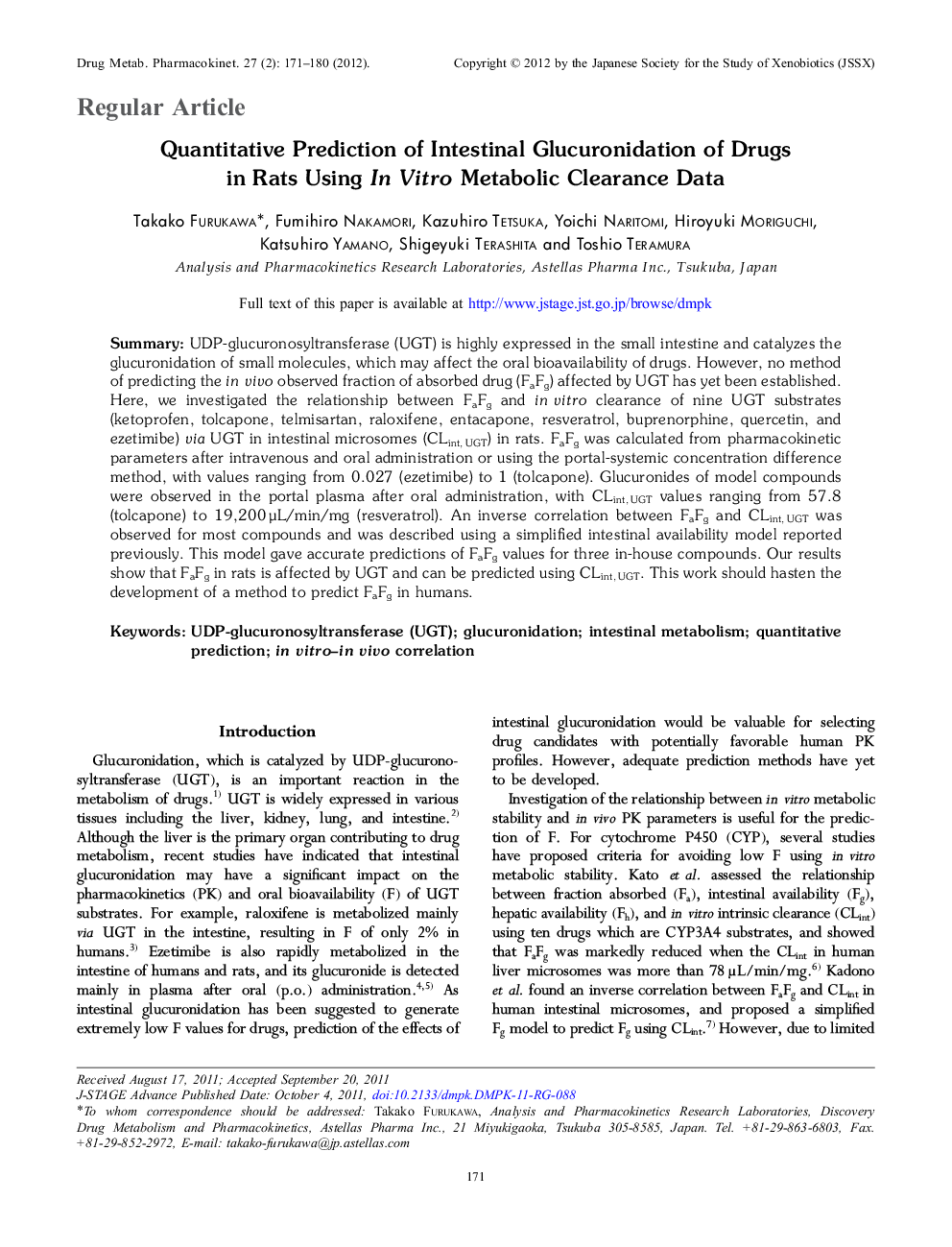| Article ID | Journal | Published Year | Pages | File Type |
|---|---|---|---|---|
| 2479180 | Drug Metabolism and Pharmacokinetics | 2012 | 10 Pages |
Summary:UDP-glucuronosyltransferase (UGT) is highly expressed in the small intestine and catalyzes the glucuronidation of small molecules, which may affect the oral bioavailability of drugs. However, no method of predicting the in vivo observed fraction of absorbed drug (FaFg) affected by UGT has yet been established. Here, we investigated the relationship between FaFg and in vitro clearance of nine UGT substrates (ketoprofen, tolcapone, telmisartan, raloxifene, entacapone, resveratrol, buprenorphine, quercetin, and ezetimibe) via UGT in intestinal microsomes (CLint,UGT) in rats. FaFg was calculated from pharmacokinetic parameters after intravenous and oral administration or using the portal-systemic concentration difference method, with values ranging from 0.027 (ezetimibe) to 1 (tolcapone). Glucuronides of model compounds were observed in the portal plasma after oral administration, with CLint,UGT values ranging from 57.8 (tolcapone) to 19,200 μL/min/mg (resveratrol). An inverse correlation between FaFg and CLint,UGT was observed for most compounds and was described using a simplified intestinal availability model reported previously. This model gave accurate predictions of FaFg values for three in-house compounds. Our results show that FaFg in rats is affected by UGT and can be predicted using CLint,UGT. This work should hasten the development of a method to predict FaFg in humans.
